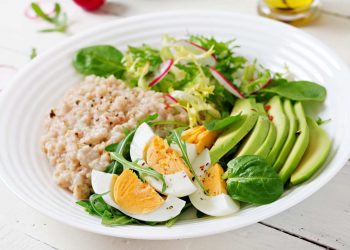Contents
- Bones density foods are the specific nutrients and whole foods that help build and preserve the mineral strength of your skeleton.
- Bones Density Foods: The 7 Essentials
- Calcium-Rich Dairy And Fortified Alternatives
- Leafy Greens And Calcium Bioavailability
- Fatty Fish For Vitamin D And Omega-3s
- Nuts And Seeds For Magnesium And Healthy Fats
- Beans And Lentils For Protein And Minerals
- Fortified Grains And Cereals For Extra Nutrients
- Vitamin C-Rich Fruits And Vegetables For Collagen
- How These Foods Work Together
- Special Considerations
- Practical Meal Plan: One Week Starter
- Common Myths Debunked
- Evidence And Expert Voices
- Bottom Line
- FAQ
Bones density foods are the specific nutrients and whole foods that help build and preserve the mineral strength of your skeleton.
Bones density foods matter because your bones are not background fixtures — they hold your life upright. This simple phrase points straight to what feeds bone: calcium, vitamin D, protein, magnesium, vitamin K, vitamin C, and healthy fats. When you choose the right foods, you lower fracture risk, keep mobility, and protect independence.
If you’re tired of diets that feel like chores, good. This article strips away the nonsense and gives you seven real, delicious options you can shop for and cook tonight. These bones density foods are chosen for clarity, science, and the plain truth that food should nourish your life.
I’ll tell you what each does, how to use it, how much to aim for, and practical swaps that keep eating simple. Expect solid science, straightforward tips, and a nudge to act.
Bones Density Foods: The 7 Essentials
Calcium-Rich Dairy And Fortified Alternatives
Milk, yogurt, and cheese are familiar for a reason: they deliver calcium and protein in highly usable forms. For people who avoid dairy, fortified plant milks and yogurts supply equivalent minerals and vitamin D in many brands.
Clinicians recommend three servings a day for many adults, adjusted by age and health status. Try Greek yogurt with fruit, or a fortified oat milk latte. When you cook, use low-heat methods and add citrus to meals to preserve vitamin content and flavor.
Leafy Greens And Calcium Bioavailability
Kale, bok choy, collards, and turnip greens give calcium, magnesium, and vitamin K — nutrients that shape the bone matrix. Not all greens are equal: spinach has oxalates that bind calcium, while kale and bok choy release it readily.
Aim for a colorful plate: a sautéed pot of mixed greens, a kale Caesar, or a warm collard salad with lemon and garlic. Steaming or quick sautés keep nutrients accessible and make these foods a weekly habit.
Fatty Fish For Vitamin D And Omega-3s
Salmon, sardines (with bones), and mackerel supply vitamin D, calcium, and anti-inflammatory omega-3 fats. Vitamin D helps your body absorb calcium — without it, calcium sits in the bloodstream instead of building bone.
Include fatty fish twice weekly, or choose canned sardines on whole-grain toast. If you can’t eat fish, talk to your clinician about testing vitamin D levels and using a supplement if needed.
Nuts And Seeds For Magnesium And Healthy Fats
Almonds, walnuts, chia, and flaxseed bring magnesium, phosphorus, and plant protein to your meals. Magnesium supports mineralization and helps regulate calcium channels inside bone cells.
Snack on a small handful of almonds, sprinkle chia seeds on yogurt, or add ground flax to muffins for a texture and nutrient boost. These small rituals add up fast.
Beans And Lentils For Protein And Minerals
Legumes like lentils, chickpeas, and black beans are affordable, filling, and loaded with plant protein, magnesium, and iron. They help preserve lean mass, which supports bone by maintaining muscle that loads the skeleton.
Make a batch-cooked pot of lentil stew, toss chickpeas into salads, or blend white beans into creamy dips. Versatility makes them a cornerstone of bone-friendly eating.
Fortified Grains And Cereals For Extra Nutrients
Many cereals and whole grains are fortified with calcium and vitamin D, which is especially handy for people with limited food variety. Read labels and choose lower-sugar options to get the benefits without the empty carbs.
A bowl of fortified cereal with berries and a fortified milk substitute is a fast, nutrient-rich breakfast. Fortified bread and oatmeal can also help you reach daily goals without complicated cooking.
Vitamin C-Rich Fruits And Vegetables For Collagen
Citrus, strawberries, bell peppers, and broccoli supply vitamin C, which your body needs to build collagen — the scaffold that mineral crystals attach to. Strong collagen makes bones resilient rather than brittle.
Aim to add a colorful produce serving to each meal. A citrus vinaigrette on greens or roasted bell peppers on whole-grain toast brings flavor and repair capacity to your plates.
How These Foods Work Together
Bone health is an orchestra, not a solo act. Calcium gives structure, vitamin D opens absorption, protein repairs microdamage, vitamin K helps direct minerals into the matrix, and vitamin C builds collagen. Weight-bearing activity tells bone where to add strength.
Combining food categories gives your body the complete toolkit. Relying on one nutrient alone leaves gaps; a pattern of whole, varied foods does the heavy lifting.
How Much To Eat
General targets are a useful starting point: many adults aim for about 1,000–1,200 mg of calcium per day, and vitamin D needs vary — testing helps personalize dosing. Protein targets typically hover around 0.8–1.2 g/kg for older adults to preserve muscle mass.
Use whole foods first; supplements support gaps. Work with your clinician to tailor the numbers to your age, sex, medical history, and medications.
Cooking Tips And Simple Swaps
Small swaps are sustainable wins. Replace soda with sparkling water and citrus. Swap evening chips for roasted chickpeas. Cook fish with olive oil and lemon rather than a heavy batter.
Batch-cook beans, keep a jar of mixed nuts in your bag, and buy frozen berries for yogurt. These habits keep nutrient-dense options in reach on busy days.
Special Considerations
If you have conditions like lactose intolerance, celiac disease, or autoimmune disorders, you may need tailored choices. Certain medications, such as long-term corticosteroids, increase bone loss and require proactive strategies.
Work with an endocrinologist or registered dietitian to design a plan that fits your labs, lifestyle, and preferences. That personalized care is what converts good intentions into stronger bones.
Supplements And When To Use Them
Supplements can bridge real gaps. A clinician-prescribed vitamin D3 dose corrects deficiency safely, and calcium supplements can top up inadequate dietary intake. But supplements are adjuncts — they don’t replace the co-factors and benefits of whole foods.
Monitor levels and avoid megadoses unless directed. Combining supplements with the nutrient patterns above gives the best long-term outcomes.
Testing And Monitoring
A DXA scan measures bone mineral density and shows where you stand, while blood tests for vitamin D and kidney function guide safe supplementation. Repeat testing helps assess the impact of diet, exercise, and medical treatment.
Keep records and communicate with your health team. Data makes your choices smart, not guesswork.
Practical Meal Plan: One Week Starter
I won’t give you a rigid diet. I’ll hand you a starter that’s flexible, flavorful, and realistic.
- Breakfasts: Greek yogurt with chia and berries; fortified oat milk oatmeal with almonds; scrambled eggs with spinach and whole-grain toast.
- Lunches: Salmon salad over kale; quinoa bowl with roasted chickpeas and broccoli; lentil soup with a side of fruit.
- Dinners: Baked sardines with lemon and steamed bok choy; roasted chicken with collard greens and sweet potato; black bean tacos with bell peppers and salsa.
- Snacks: A small handful of walnuts, orange slices, or a fortified cereal bar.
This plan blends protein, calcium, vitamin D, magnesium, and vitamin C — the building blocks your body uses. Use these items as your default grocery list and rotate flavors so you never get bored.
Common Myths Debunked
Myth: You must drink milk to have strong bones. Reality: Many plant and fortified options supply equivalent nutrients when planned well.
Myth: Supplements fix everything. Reality: They help, but whole foods deliver cofactors and benefits you can’t replicate in a pill. Focus on patterns — whole proteins, produce, and minimally processed grains — then supplement where labs show need.
Myth: Exercise doesn’t matter. Reality: Load-bearing movement signals bone to build. Pair food with movement.
What About Sodium And Soda?
High sodium intake increases calcium loss, and excess sugary beverages correlate with lower bone mineral density in studies. Flavor food with herbs, swap soda for sparkling water, and limit processed, high-salt convenience meals.
These changes protect the gains you make from nutrient-dense choices.
Evidence And Expert Voices
Major institutions emphasize diet plus exercise for bone health. The National Institutes of Health and university-based nutrition research all point to calcium, vitamin D, and weight-bearing activity as core strategies. Nutrition scientists report that dietary patterns rich in whole foods and low in highly processed products are consistently associated with better bone outcomes.
For clear guidance, you can read the clinical overviews at the National Library of Medicine and practical tips from major medical centers for everyday use.
Bottom Line
These seven categories — dairy or fortified alternatives, leafy greens, fatty fish, nuts and seeds, beans and lentils, fortified grains, and vitamin C-rich produce — are simple, powerful, and evidence-backed. Make bones density foods the default in your shopping cart, pair them with movement, and get medical oversight as you change habits.
Think of these choices as quiet investments in future mobility and confidence. Start with one swap this week, and let small, consistent habits build a stronger tomorrow.
Be kind to yourself. You can do this one plate at a time.
FAQ
Do I Need Supplements If I Eat These Foods?
Not always. If your diet meets recommended calcium and vitamin D targets and your labs are normal, you may not need supplements. However, many adults benefit from testing and targeted supplementation under clinical guidance.
How Quickly Will Diet Improve Bone Density?
Bone remodeling is slow. You may notice lab and symptom improvements in months, but measurable changes on a DXA scan take a year or more. Consistency with diet and exercise is the key driver.
Are Plant Sources Enough For Older Adults?
Yes, with planning. Fortified plant milks, legumes, greens, nuts, and seeds can meet needs, but older adults should monitor intake and consider supplements based on testing.
Can I Get Too Much Calcium?
Excessive calcium from supplements can have risks. Follow clinician guidance, and prioritize dietary sources before adding large supplemental doses.
Which Professional Should I Consult?
Start with your primary care clinician; they can order vitamin D tests and refer you to an endocrinologist or registered dietitian for specialized care.
References
- National Institutes of Health (NIH) Office of Dietary Supplements provides guidance on calcium and vitamin D and their role in bone health (http://ods.od.nih.gov/).
- Harvard T.H. Chan School of Public Health offers practical, evidence-based nutrition advice related to bone health and dietary patterns (https://www.hsph.harvard.edu/nutritionsource/).
- National Osteoporosis Foundation provides clinical recommendations and educational resources for assessment and treatment of low bone density (https://www.nof.org/).
Get Your FREE Natural Health Guide!
Subscribe now and receive our exclusive ebook packed with natural health tips, practical wellness advice, and easy lifestyle changes — delivered straight to your inbox.















